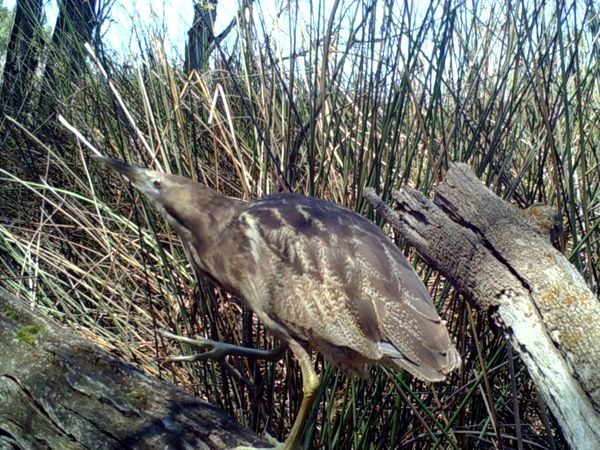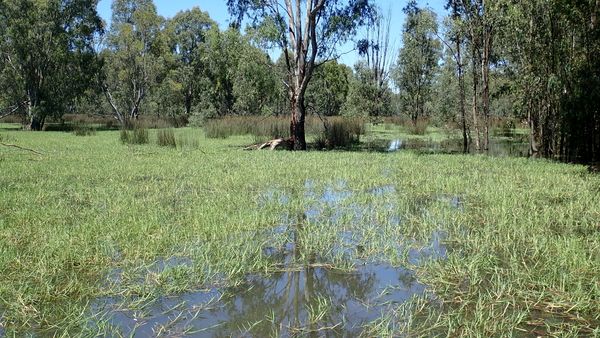There is nothing bitter about a bittern!
The Australasian bittern, currently listed as endangered in Australia, is a rather crafty bird that works hard to blend into its surrounding environment. Their streaky brown and white feathers and green stork-like legs make it hard to spot between the reeds and rushes that grow on the bed of the wetlands and floodplains they like to live in. When bitterns think predators are near, they freeze – going completely still like the grasses around them helping to keep them concealed from danger…

Australasian bittern in Barmah Forest captured using a trail camera, by Keith Ward and Tim Barlow, Goulburn Broken CMA
While they may be cryptic and rarely seen, the distinctive ‘booming’ call of the male in breeding season is the best sign of their presence.
Bunyip or Bittern…Did you know? When heard from the edge of a swamp, billabong or waterhole, the booming call can lead to imagining a large mythical creature – especially at night!
A major threat to the Australasian bittern is a lack of habitat availability. River regulation, water diversion and ongoing dry conditions has led to a decrease in the shallow floodplain and wetland areas that bitterns like to breed and feed in.
In the north of Victoria, the Barmah-Millewa Forest is an ideal location for bitterns – reports from 2015-16 demonstrated between 8 to 20 percent of the world’s population of endangered Australasian bitterns were feeding and breeding in the forest. Monitoring in 2017-18 recorded up to 50 male bitterns across Barmah-Millewa – 10 of these were heard calling.

Moira grass (front) and Giant Rush (back) vegetation on the floodplain marshes in Barmah Forest, by Keith Ward, Goulburn Broken CMA
Since we know bitterns are using these wetlands to breed, it is important to try and ensure there is good habitat available for them. Last watering year, 2018-19, around 30 percent of the Barmah floodplain was inundated with water for the environment during spring. This resulted in an excellent vegetation response for wetland plants, including Moira grass, river swamp wallaby grass, and giant rush, on the shallow fresh water marshlands – this is the kind of habitat the bitterns like to forage and breed in.
The male bittern, with its booming call, will attract and breed with multiple females. The female bitterns create a nest of dry or green reeds forming a platform just above water level to lay their eggs; if the water level rises more reeds can be added to keep the nest dry.
Bitterns usually search for food at night; they enjoy eating small animals including other birds, fish, frogs, yabbies, snails, insects and spiders. Sometimes bitterns wait very still and let the food come to them, other times they will slowly stalk their prey and sometimes they even chase after it.
How do environmental flows help Australasian bitterns?
- Environmental flows inundate wetlands and floodplains encouraging the growth of wetland vegetation species increasing habitat and feeding opportunities for bitterns.
- Bitterns breed and nest in shallow water, environmental flows help ensure that wetlands and floodplains have water, supporting the bittern’s life cycle.
- Water for the environment helps maintain habitat for frogs, fish and insects – all key foods in a bittern’s diet.